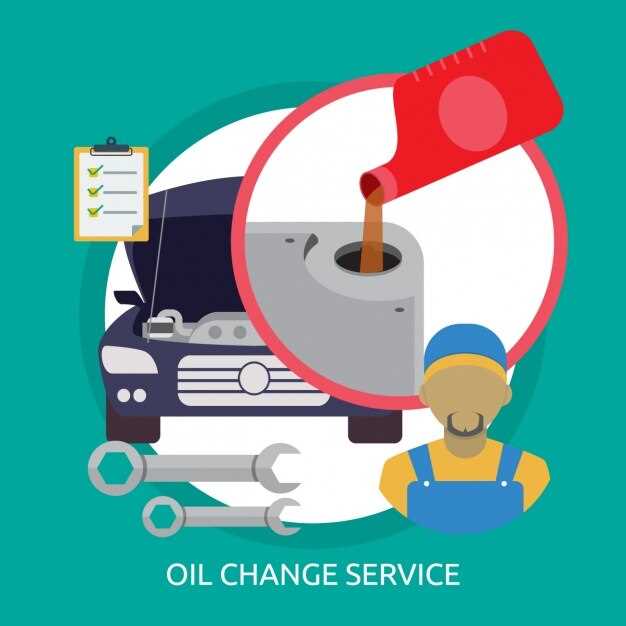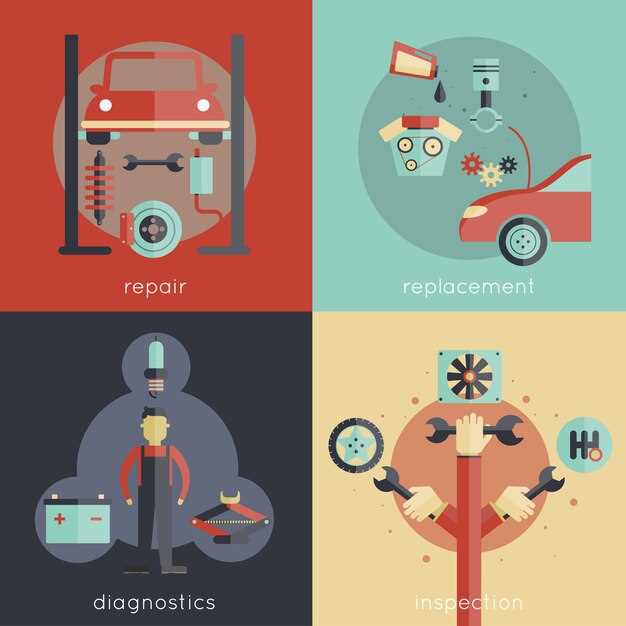
Coolant leaks can be a significant concern for vehicle owners, as they can lead to overheating and severe engine damage if not addressed promptly. Understanding the common causes of these leaks can help you identify and resolve the issue before it escalates. From minor hose wear to severe radiator damage, knowing what to look for is crucial for maintaining the health of your engine.
One prevalent cause of coolant leaks is the deterioration of rubber hoses and gaskets over time. Exposure to high temperatures and engine vibrations can lead to cracking and wear, resulting in fluid loss. Additionally, connections between hoses and fittings can become loose, leading to further leaks. Regular inspections of these components can help catch issues early, potentially saving you from costly repairs.
Another factor contributing to coolant leaks is corrosion within the cooling system. Metals can react with contaminants in the coolant, leading to rust and openings that can allow coolant to escape. It’s essential to maintain a clean cooling system through regular flushing and using quality antifreeze to minimize these risks. In the following sections, we will explore these common causes in detail and discuss effective solutions to mitigate coolant leaks.
Identifying Symptoms of a Coolant Leak
Detecting a coolant leak early is essential to prevent engine overheating and more severe damage. One of the first signs of a potential coolant leak is the presence of puddles or stains beneath your vehicle. If you notice a green, orange, or pink liquid, it’s likely coolant leaking from the system.
Another common symptom is an unusual rise in engine temperature. If your dashboard temperature gauge shows a higher reading than normal, it may indicate that the engine is not receiving sufficient coolant due to a leak.
Keep an eye out for steam or smoke coming from under the hood, as this can signify that the coolant is boiling due to excessive heat. This is often accompanied by a sweet smell, characteristic of antifreeze, indicating that coolant is evaporating as it leaks.
Moreover, frequent topping off of your coolant reservoir can be a clear indicator of a leak. If you find yourself adding coolant more often than usual, it’s crucial to inspect the system for potential leaks.
Lastly, pay attention to your vehicle’s performance. A drop in power or strange engine noises can also signal a coolant leak. These symptoms often stem from overheating, which can lead to engine damage if not addressed promptly.
Common Locations for Coolant Leaks in Vehicles
Coolant leaks can occur in various parts of a vehicle’s cooling system. Identifying the common locations of these leaks is essential for timely repairs and maintaining engine performance. Below are the key areas where coolant leaks typically happen:
- Radiator:
The radiator is a frequent source of coolant leaks due to corrosion, physical damage, or accumulated debris. Check for wet spots or signs of rust.
- Coolant Hoses:
Hoses connecting different components of the cooling system can wear out over time. Inspect for cracks, bulges, or fraying, especially at the joints.
- Water Pump:
If the water pump is failing, it can lead to leaks where the pump mounts to the engine or from the weep hole. Look for pooling coolant beneath the pump.
- Head Gasket:
A blown head gasket can cause coolant to leak internally or externally. Symptoms include overheating and coolant mixing with oil.
- Thermostat Housing:
Leaks can occur around the thermostat housing due to deterioration of gaskets or seals. Check for wetness around the housing area.
- Heater Core:
In cars with a heating system, the heater core can develop leaks, leading to coolant entering the passenger compartment. Look for damp carpets or a sweet smell.
- Overflow Tank:
Cracks or loose connections in the overflow tank can lead to coolant spills. Inspect for signs of cracks or damaged fittings.
- Intake Manifold:
Coolant passages in the intake manifold can leak, particularly in older engines. Symptoms may include overheating or coolant loss without visible leaks.
Regular checks and maintenance of these areas can prevent coolant leaks and ensure your vehicle operates efficiently. Prompt attention to any signs of leaking coolant is crucial for preventing further engine damage.
How to Inspect Hoses and Clamps for Damage
Inspecting hoses and clamps is crucial for preventing coolant leaks in your vehicle. Hoses transport coolant between the engine, radiator, and other components, while clamps secure these hoses in place. Damage to either can lead to serious leaks and overheating issues.
Follow these steps to effectively inspect hoses and clamps:
| Step | Action | What to Look For |
|---|---|---|
| 1 | Visual Examination | Check for cracks, fraying, or bulges in the hoses. Ensure clamps are not rusted or corroded. |
| 2 | Check Hose Condition | Gently squeeze the hoses. They should feel firm but flexible. If they are too hard or too soft, they may need replacement. |
| 3 | Inspect Connections | Examine where hoses connect to the engine and radiator. Look for signs of leakage or moisture buildup. |
| 4 | Clamp Tightness | Ensure that clamps are securely tightened without being overly tight, which can damage hoses. |
| 5 | Age of Components | Consider the age of the hoses and clamps. Rubber hoses typically last 4 to 6 years, so replacement may be necessary even without visible damage. |
After completing the inspection, replace any damaged hoses or clamps immediately to avoid coolant leaks. Regular maintenance checks will help extend the life of your cooling system components and prevent overheating issues down the line.
Diagnosing Issues with Radiators and Water Pumps

Diagnosing problems with radiators and water pumps is essential for maintaining optimal engine performance and preventing coolant leaks. One of the first signs of a potential issue is overheating. When the engine temperature rises significantly, it may indicate a blocked or leaking radiator. Inspect the radiator for any visible signs of damage, corrosion, or clogged passages that may prevent proper coolant flow.
Next, check the water pump, which is crucial for circulating coolant throughout the engine. Look for leaks around the water pump shaft or weep hole, as these can indicate a failing pump. Listen for unusual noises, such as grinding or whining sounds, which may signal bearing wear. A belt that appears loose or cracked could also compromise the efficiency of the water pump.
Another critical aspect is assessing the coolant’s condition. If it appears rusty or contains debris, it could clog the radiator and water pump. Flushing the cooling system can help remove contaminants and improve performance. Additionally, verify that the coolant level is adequate. Low coolant levels can cause scenarios of overheating and may point to leaks in the radiator or water pump.
If the radiator’s temperature gauge fluctuates or shows inconsistent readings, it may signify a faulty thermostat or sensor rather than an issue with the radiator itself. Replacing a malfunctioning thermostat can restore proper engine temperature control.
In summary, diagnosing radiator and water pump issues involves observing symptoms such as overheating, leaks, strange noises, and coolant condition. Regular maintenance and inspection can help identify problems early, ensuring a proactive approach to vehicle health and reducing the risk of major repairs.
Sealing Gasket Failures and Their Repair Options
Sealing gaskets play a crucial role in preventing coolant leaks, as they provide a barrier between different components of an engine or cooling system. Over time, these gaskets can deteriorate due to exposure to high temperatures, chemicals, and physical wear, leading to potential leaks. Common types of gaskets that may fail include head gaskets, intake manifold gaskets, and water pump gaskets.
One prevalent cause of gasket failure is overheating. When an engine runs hotter than usual, the gasket material can become brittle, leading to cracks or deformation. Regular maintenance, such as checking coolant levels and monitoring engine temperature, can mitigate this risk. If overheating occurs, replacing the failed gasket is essential to prevent further damage.
Another contributing factor to gasket leaks is the use of incorrect gasket materials during repairs. Each application requires a specific type of gasket designed to withstand particular temperatures and pressures. Utilizing the wrong type could lead to premature failure. When replacing a gasket, always select one recommended by the manufacturer for that specific application.
Wear and tear from vibration is also a common issue. Engines produce significant vibrations, which can gradually loosen or damage gaskets. Regular inspections of engine mounts and other components can help identify issues that might contribute to extra vibrations. If a gasket is found to be compromised, it should be replaced and any underlying problems resolved to prevent recurrence.
To repair gasket failures, several options are available. The most straightforward solution is to replace the failed gasket with a new one. This may involve disassembly of parts to access the gasket, so it’s crucial to meticulously follow the service manual for proper installation. In some cases, a gasket sealant may be used as a temporary fix; however, this should not replace proper gasket replacement. Sealants can provide a short-term solution but may not hold up under extreme conditions and should be monitored closely.
In summary, sealing gasket failures can arise from overheating, inappropriate materials, and engine vibrations. To ensure reliable performance, regular maintenance and timely repairs are vital. When dealing with gasket issues, replacement is generally the best long-term solution, while sealants can provide temporary relief when immediate repair is not feasible.
When to Seek Professional Help for Coolant Leaks
Identifying and addressing coolant leaks is crucial for maintaining your vehicle’s health. However, certain situations warrant the expertise of a professional mechanic. Here are key indicators that signal the need for professional intervention.
1. Persistent Leaks: If you notice coolant pooling under your vehicle regularly, especially after refilling the coolant, it’s essential to consult a professional. Persistent leaks can stem from faulty components that need expert diagnosis and repair.
2. Overheating Engine: An engine that frequently overheats indicates insufficient coolant circulation, possibly due to a significant leak. Continuing to drive an overheating vehicle can cause severe engine damage, making immediate professional evaluation necessary.
3. Frequent Coolant Top-Ups: If you find yourself routinely topping up your coolant levels without visible external leaks, the issue could be internal, such as a head gasket failure or a blocked heater core. These problems require specialized tools and knowledge for accurate detection.
4. Presence of Engine Smoke: Any visible smoke from the engine bay or the exhaust can signal serious underlying issues, such as coolant leaking into the combustion chamber. This dangerous situation should prompt you to seek professional help right away.
5. Unusual Noises: Sounds such as hissing or bubbling within the engine could indicate coolant boiling or escaping due to high pressure. These symptoms need to be checked by a mechanic to prevent further complications.
6. System Warning Lights: Activation of dashboard warning lights, particularly those related to engine temperature or coolant levels, signifies that you should not ignore the problem. Professional evaluation is essential to determine the root cause.
7. Lack of Experience: If you lack the tools or knowledge to assess the situation accurately, it is safer to rely on a professional mechanic. Attempting repairs without the requisite skills may worsen the issue.
Addressing coolant leaks promptly can save you time and money in repairs. Recognize when to seek professional help to ensure your vehicle remains in optimal condition.















